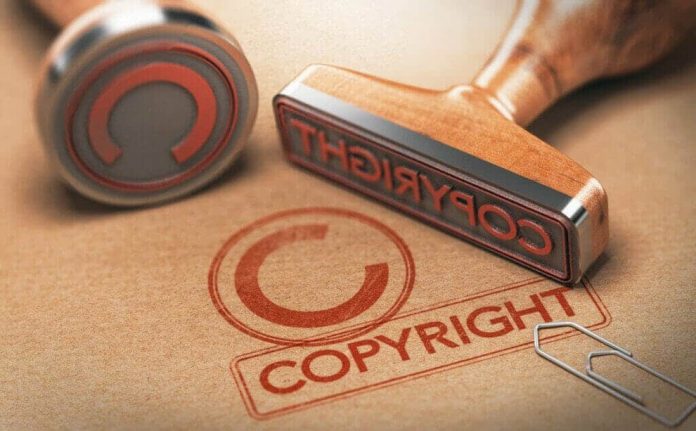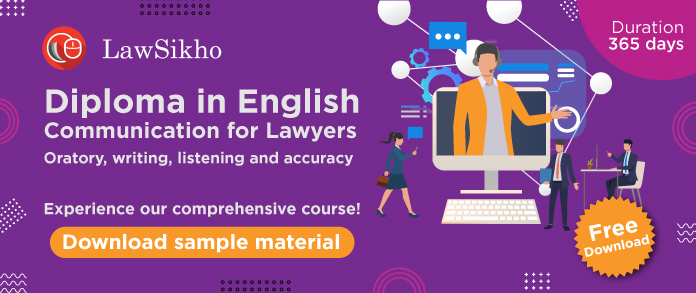This article has been written by Lakshmi Menon pursuing Diploma in Intellectual Property, Media and Entertainment Laws and has been edited by Oishika Banerji (Team Lawsikho).
This article has been published by Sneha Mahawar.
Table of Contents
Introduction
Intellectual property is a property that is intangible in nature. They are creations of the human mind and intellect. There are various types of intellectual property rights. Some of the main intellectual property rights are patents, trademarks, trade secrets, and copyright. Intellectual property rights mainly try to protect creations that result from human intellect to enable the person creating it to enjoy the monetary and moral benefits of his creation. Copyright is one such important intellectual property right. Copyright is the bundle of rights that law grants to the creator of a literary, dramatic, musical cinematograph film, or artistic work and with the advent of computers, computer programmes, and codes. In this article, we will discuss the meaning, nature and scope of copyright in India thereby also focusing on judicial pronouncements in relation to the same.
What do you mean by copyright
Copyright is a means of protecting, promoting, spreading, and enriching the cultural heritage of the country. It protects the creativity and originality of the creator whereby the creator is remunerated morally or monetarily. The Copyright Act of 1957 entitles the creator to do or authorise to do certain acts with respect to his work.
- Being the author of literary, dramatic, and musical work, gives the person the right to reproduce the work in any form, to adapt it to any form or authorise anyone to adapt his work or reproduce his work, additionally to store the work in any form including electronic form.
- It gives the creator the right to communicate his work to the public through public performance, allowing the work to be made into a cinematographic film, translating the work to any language, and printing copies to be circulated to the public.
- Where the work is an artistic work it allows the creator to reproduce the work and store it in any medium plus depicting it in any dimension. It also allows the creator to reproduce as many copies as he desires, to communicate his work to the general public, to adapt it to any form, or to include his work in any cinematograph film.
- Where the creator is the creator of a cinematographic film, the creator is entitled to make copies of such films and to communicate the work to the public. Additionally, he has a right to take and store still photographs from the film and store his creation in any medium.
- Having exclusive rights in sound recording enables the creator to communicate his piece to the public, and make another piece by assimilating it and storing it in any medium.
- Having exclusive rights in computer programmes entitles the creator to reproduce, adapt, make copies, and store the programme and codes.
- The author or creator has the right to sell his creation or give on rental his creations. It prohibits any person to use an author’s creation in any way without his consent.
Copyright and originality
A person can enjoy the benefits of the Copyright Act, 1957 only if the work is original. Originality is a basic feature of copyright. When a work is not original but a copy of some earlier work it is liable to be charged with infringement. The word ‘originality’ is not explained in the Act. One has to rely on the rulings of the Courts to understand ‘originality’.
One of the earliest rulings is the case of University of London Press, Limited vs. University Tutorial Press Limited (1916). The Court held that ‘original’ does not mean that the work must be inventive or a thought over which no one has expressed anything. It is not concerned with the idea but the way the idea is expressed. It does not require that the idea is novel, but the work must not be a copy of another work. The expression of work should originate from the author. Courts in India have been following this principle. A work is said to be a copy of another when after seeing, reading, or hearing both works, one gets a feeling that the latter appears to be similar to the former.
In Veerabhadra Rao v. B.N.Sarma (1960) the issue was originality in the context of translation. The case involved a Telugu rendering translation of the English book ‘Indian Police Action against Hyderabad’. The author had drawn some materials from the English work and added many things from history and other sources. The book was more informative and lucid. The Court held that it was an original composition of Mr. Sarma, though he had gathered materials from the appellant’s book and historical facts. The original composition should not be confined to an idea that has never been traversed by any person, in respect of ideas or materials. Original ideas are few, and many works are based on the contribution or ideas of others. It depends upon the knowledge and talent of the author to assimilate and reproduce a product that is different from the earlier work and is able to distinguish his work from the earlier work. Copyright requires a very low standard of ‘originality’. A person seeking copyright must show his effort and creativity in making the work.
Copyright need not be registered. The author of a book or the publisher of a book has a copyright over the book till the day it comes into public view. The creator of a painting, drawing, sound recording, performer, or cinematograph film has a copyright from the day it is in the public domain. Nobody can reproduce, adapt, or use any part of it without the consent of the author or creator. It would be like trespassing into the private property of the author.
Author and owner under copyright
The author and owner of a work can be two different people.
- The author is the person who creates the work. The owner may be a different person or entity. An owner is a person who has bought the rights over the work from the author.
- The author may be commissioned by the owner for some remuneration. The person commissioning the work is the owner of the copyright unless there is an agreement to the contrary. The owner hires the services of the author to create the work. In such a case the author has a moral right over his work.
- The author has a right to be identified as to be the author and object in case his work is mutilated, distorted, or modified without his consent and prohibits the owner of copyright from doing any act that would be to the detriment of the honour or reputation of the author. This is known as the moral right as laid down under Section 57 of the Copyright Act, 1957. They are non-transferable. An author can seek damages or restraining orders even after the author has sold the rights of his work.
The Court interpreted Section 57 of the Copyright Act, 1957 in the case of Manu Bhandari vs Kala Vikas Pictures Pvt. Ltd (1986). Manu Bhandari, a reputed novelist had sold her rights of a Hindi novel to producers for producing the novel into a Hindi film. Manu Bhandari objected to the changes made in the film as they would likely damage the reputation of the author. The Court held that though the author had sold her rights in the novel, and considering she had agreed to certain changes in the novel as is bound to be in its adaptation from novel to film, it is the duty of the director, to interpret the novel and make it into a film and to see that the reputation of the author is not tarnished. The Court directed the release of the film after the deletion of some scenes from the film.
Performer’s rights under copyright law
The Copyright Act of 1957 grants rights to performers, who may be a singer, an actor, a musician, a dancer, a magician, person delivering a lecture or any such person giving a performance. Sections 38 and 39 of the Copyright Act, 1957 lay out the rights of performers. It gives the right to the performers against recording and exhibiting their performance without their consent. The owner of the place exhibiting such recording is also liable to be charged as an infringer. It shall not apply to a rebroadcast of a consented broadcast. A performer has a right to claim damages in case of distortion, mutilation, or any modification of his performance without his consent, that may prejudice his reputation and honour. Singer Neha Bhasin claimed her name to be displayed as a singer and not as a backup singer where it was proved her song was recorded and later exploited without her consent.
Term of copyright under the Copyright Act of 1957
The term of copyright in literary, dramatic, artistic, or musical work is for a period of the lifetime of the creator plus a period of sixty years after the death of the creator. Where there is the presence of multiple authors, the term 60 years is calculated post the death of the last author. The same has been guaranteed by the Copyright Act, 1957.
It is necessary to note that for cinematograph films, sound recordings, photographs, posthumous publications, anonymous and pseudonymous publications, works of government and works of international organisations, the 60 years period is calculated from the year of publication. In case these ranges of work remain unpublished, copyright subsites up to 60 years from the date the original work is said to have been created.
Further, when it comes to sound recordings, the period of 60 years is calculated from the end of the year in which that sound recording is said to have been published for the first time. When it comes to the rights of the broadcasters, the validity of the right has been provided with a period of 25 years from the year of broadcast, whereas the performer’s rights that have been our subject matter of discussion previously last for a period of 50 years from the year in which the performance was made.
Scope of copyright in India
The scope of copyright in India has received an understanding in the previous paras already. All one needs to know is that Section 13 of the Copyright Act, 1957 is the express provision that lays down the scope of copyright in India. Each category of work that has received the attention of the statute, have been detailed separately in different provisions of the Act thereby making room for exclusive rights that have been associated with each of the provisions. Sections 14, 37, 38 A are some of the significant provisions of the Act that have added to the concept of laying down established rights for the owner of such work.
Further, a look into Section 16 of the Copyright Act, 1957 states that no copyright shall be in subsistence on works, other than those which have been provided under the Copyright Act, 1957. Thus in simple terms, it can be stated that copyright is a creation of a statute. It was in the case of Akuate Internet Services Pvt Ltd vs. Star India Pvt Ltd (2013), where the concept of ‘hot news’ doctrine was introduced and the court had also interpreted who was responsible for filing a suit thereby preventing others from publishing or sharing match information. This matter awaits the view of the Supreme Court of India as of April 2021.
Recent developments made in the field of copyright in India
In the year 2021, certain changes were introduced in light of the advancement coming up in the field of copyright in India, in the Copyright Act, 1957, by means of the Copyright (Amendment) Rules, 2021. The changes were noticeable on 30th March, 2021, in the following ways:
- The primary objective of introducing these rules was to bring the rules that were existing in conformity with other relevant legislations in relation to copyright thereby also ensuring accountability and transparency in governing of the rules.
- The amendment of the Copyright rules was brought in with the purpose of smoothening the functioning of the Copyright Office by means of making it work digitally with resources that were available. This also reduced the burden of the Office.
- The amendments have sought to incorporate a new provision in concern to the publication of a copyrights journal which will thereafter be made available for the public to see in the Copyright Office.
- Accountability and transparency was also to be ensured for the Copyright societies to function and effectively work. The consequence of such demand has made the Societies to now draw up an Annual Transparency Report for the public. This kind of report is typically inclusive of royalties collected and also distributed, refusal of licences if any, transactions made with foreign societies for developed work, etc.
- The extension of the period of deciding an application whether to be accepted or rejected for the purpose of being granted with copyright, by the Registrar, from 60 to that of 180 days, is another notable change that has been introduced by the amended rules. A thing to understand here is that the Registrar should not be burdened with applications that would otherwise make him proceed with each of them in a speedy manner thus resulting in errors. Thus a sufficient period of time must be vested on the Registrar.
- The present requirement that the new amendment has been introduced for a copyright applicant to abide by is the need to submit the first 10 and the last 10 pages of source code (the entire source code can be submitted if the same is less than 20 pages, with no blocked portions).
Conclusion
As we come to the end of this article, it is ideal to state that copyright being a bundle of rights has been recognised as one of the foremost forms of intellectual property rights that have been protecting creations in the form of expressions since 1957. Alongside protecting the moral and economic rights of the author, it also serves as a requirement for the public welfare or public necessity at large for that’s why a period has been specified, upon completion of which, the work falls under public domain for learning and usage. Thus copyright being a collection of rights have remained relevant since time immemorial.
References
- https://intellectual-property-helpdesk.ec.europa.eu/news-events/news/copyright-protection-india-overview-and-recent-developments-2022-03-02_en.
- https://www.lexology.com/library/detail.aspx?g=b09caa50-97ce-40b4-96e4-37906356aa2f
Students of Lawsikho courses regularly produce writing assignments and work on practical exercises as a part of their coursework and develop themselves in real-life practical skills.
LawSikho has created a telegram group for exchanging legal knowledge, referrals, and various opportunities. You can click on this link and join:
Follow us on Instagram and subscribe to our YouTube channel for more amazing legal content.
 Serato DJ Crack 2025Serato DJ PRO Crack
Serato DJ Crack 2025Serato DJ PRO Crack












 Allow notifications
Allow notifications



